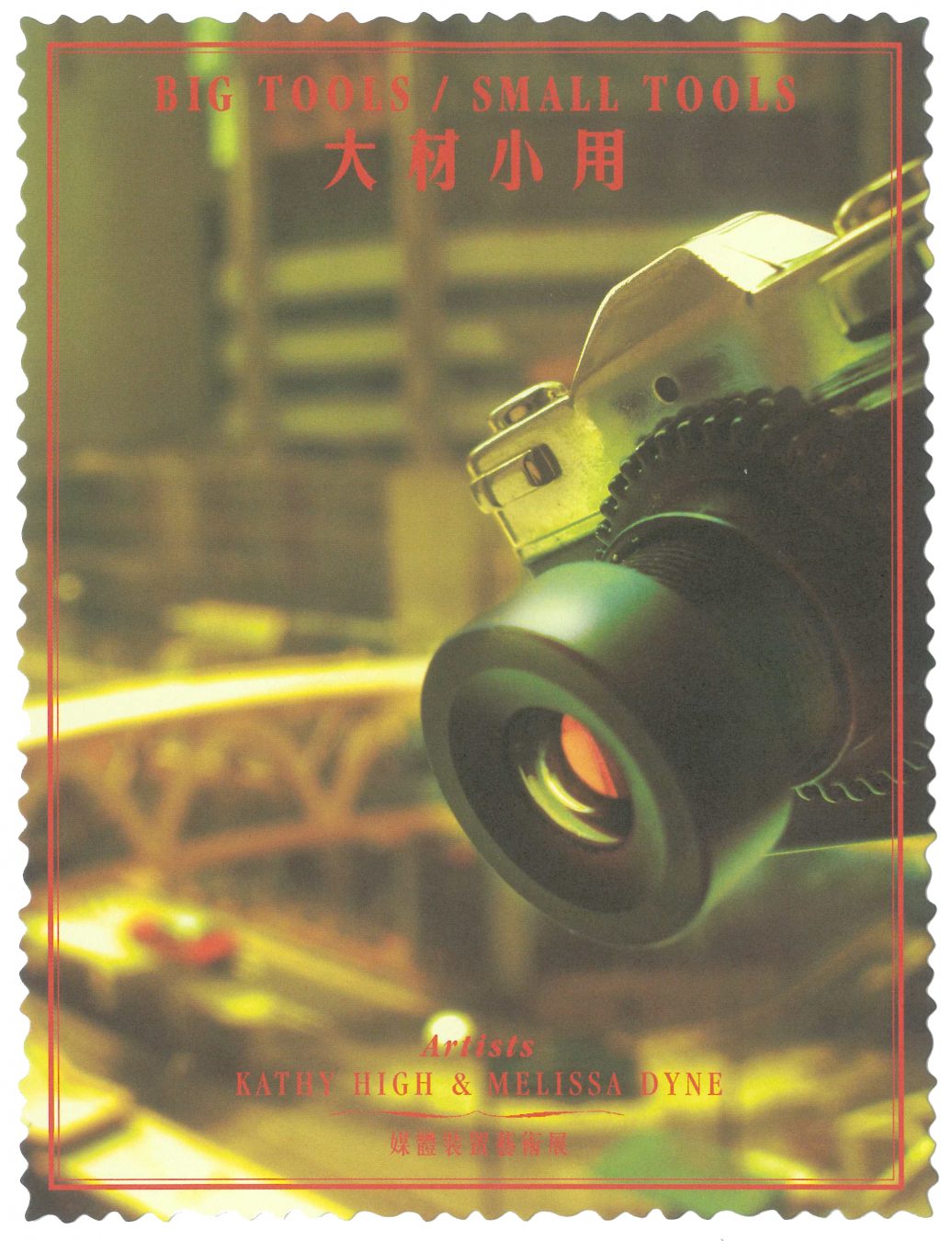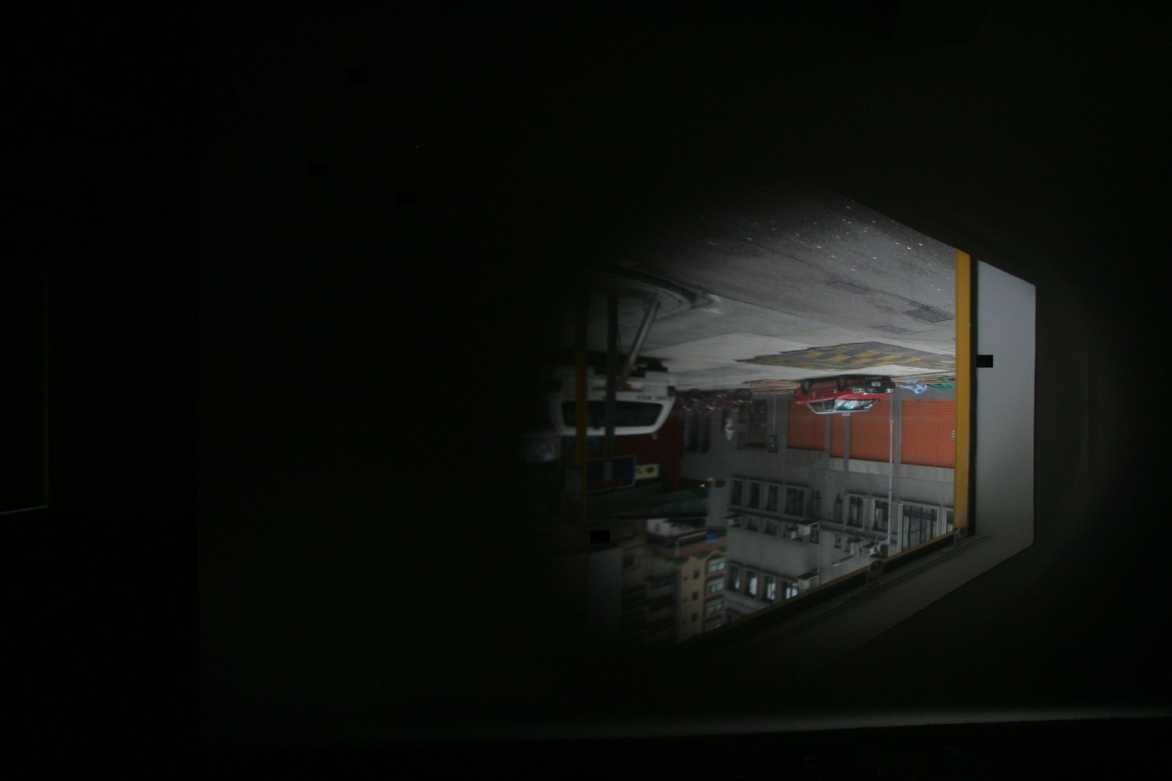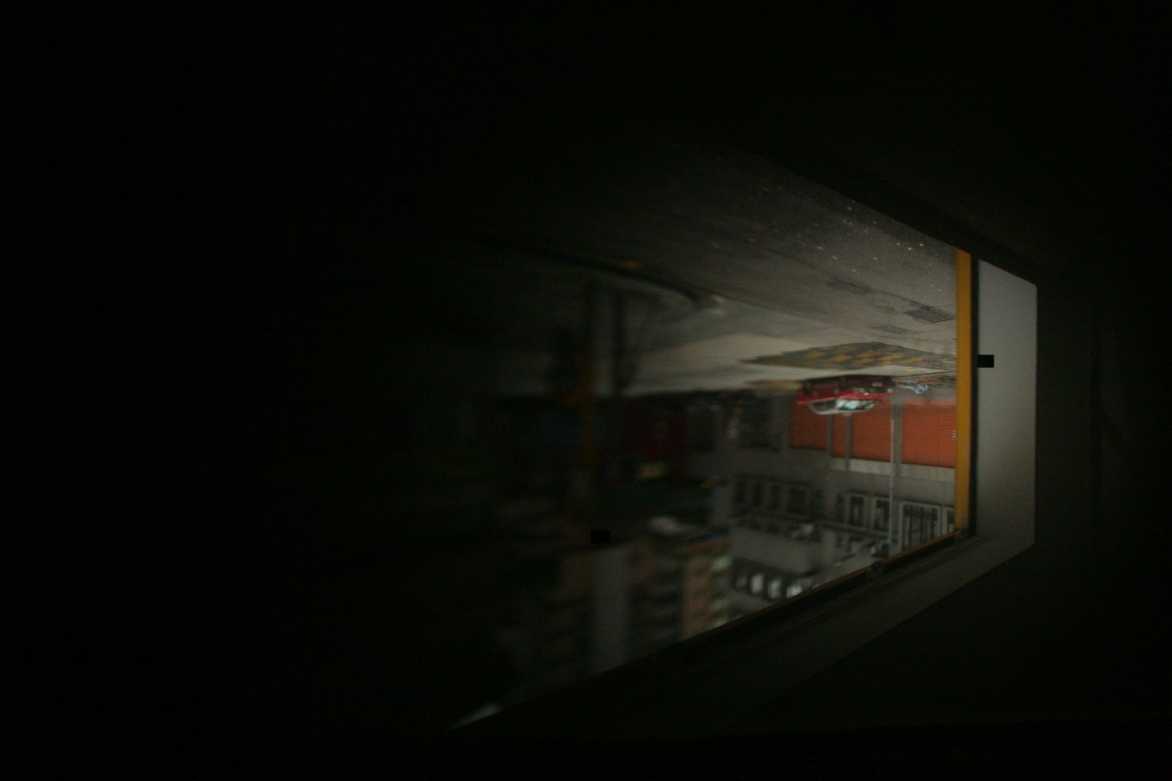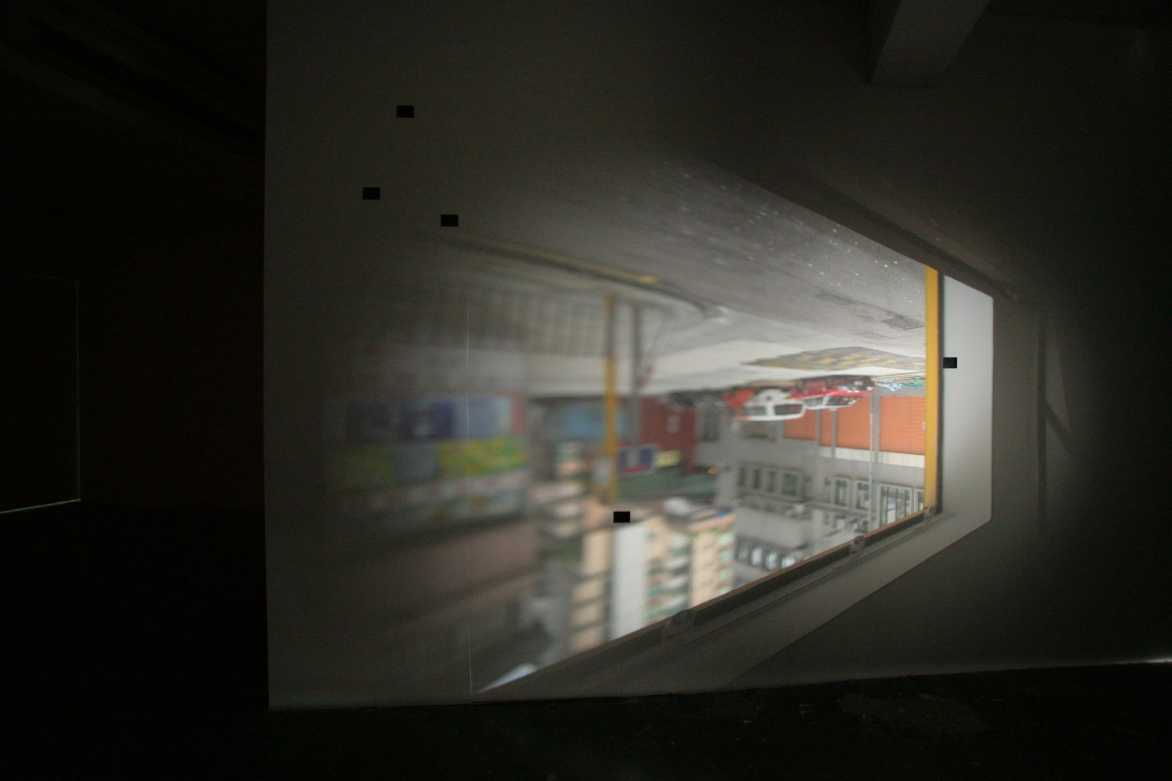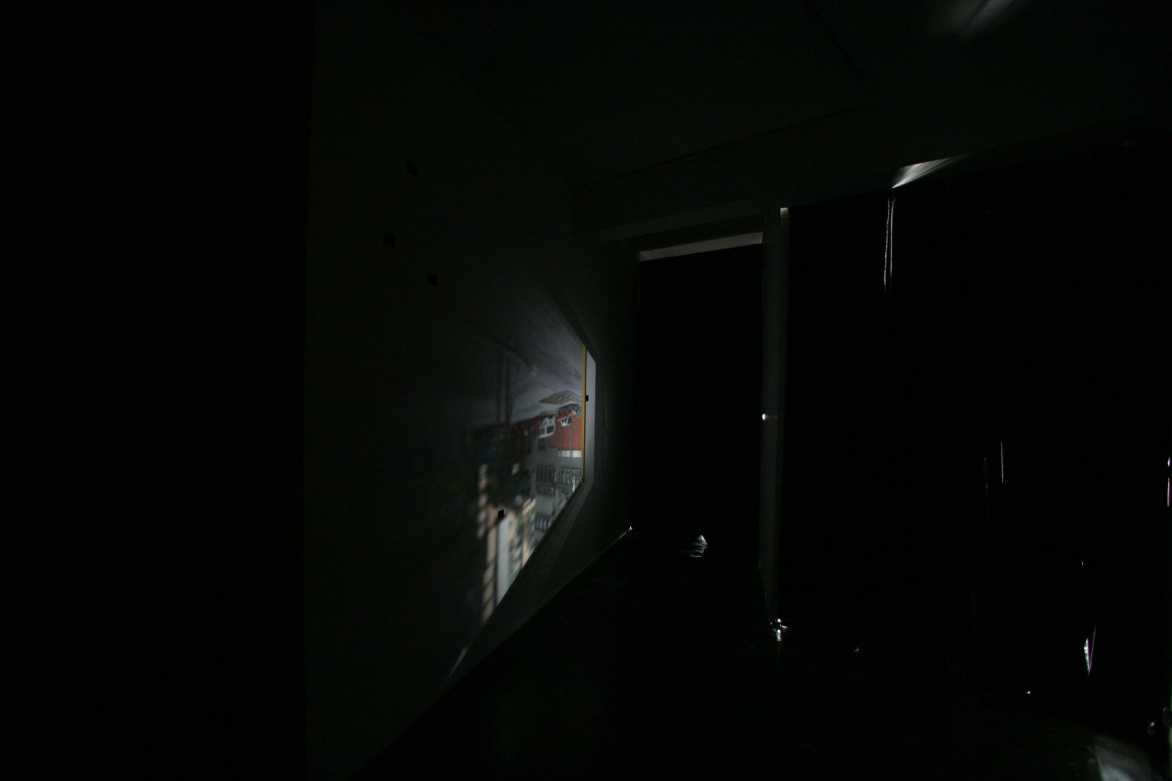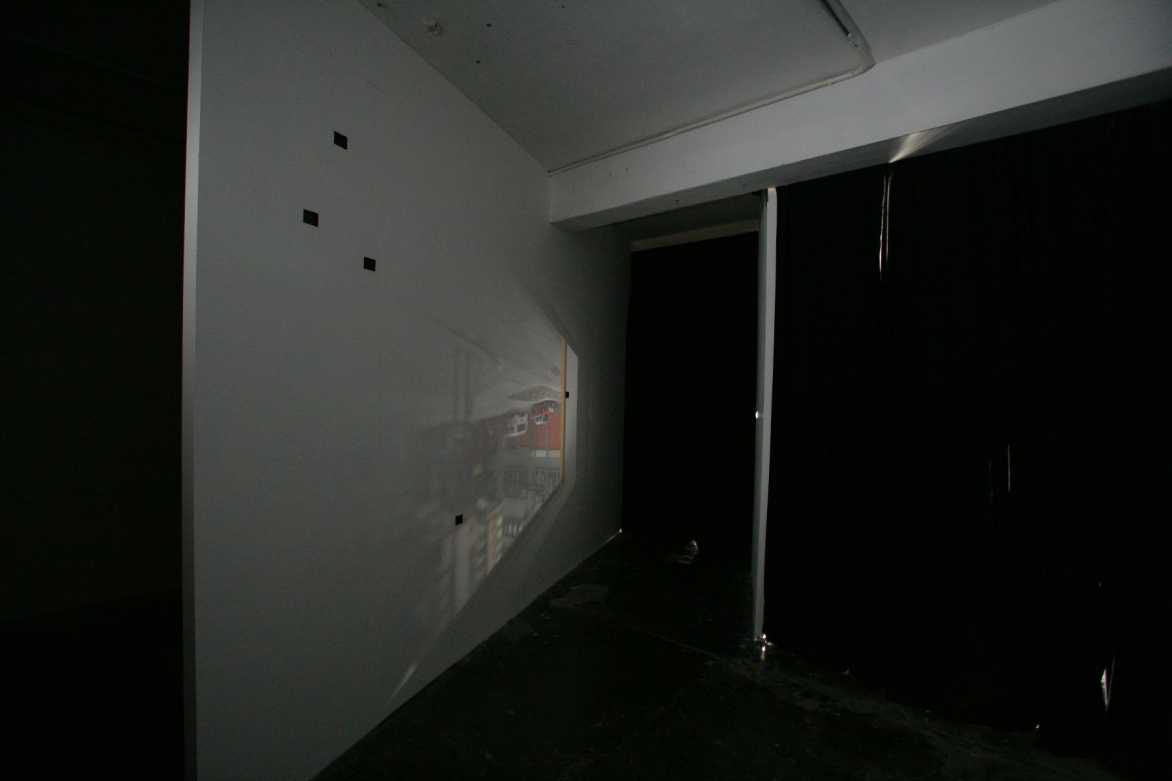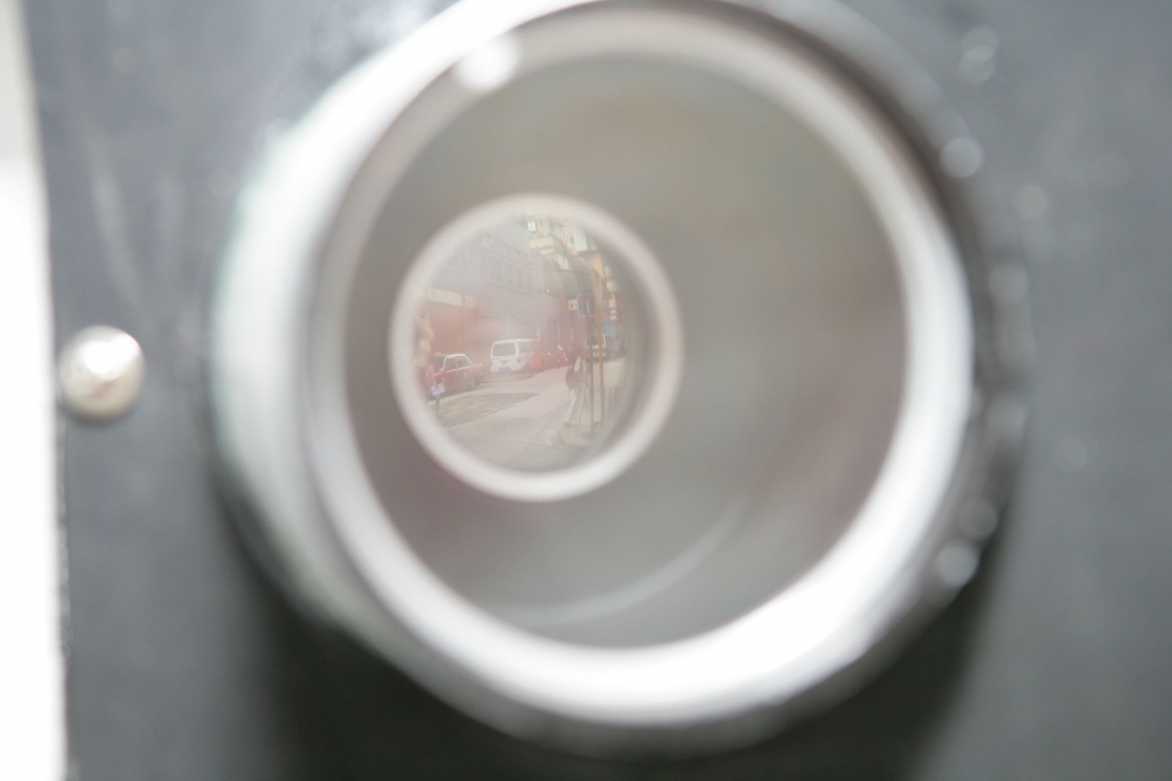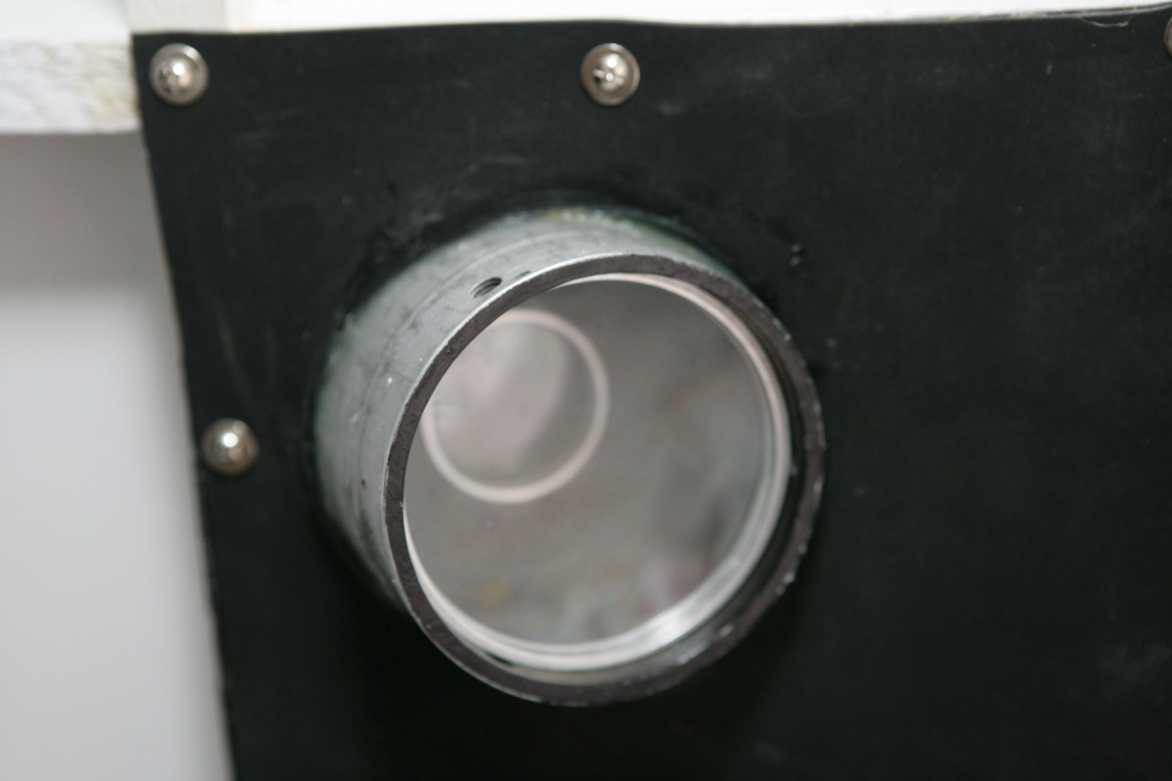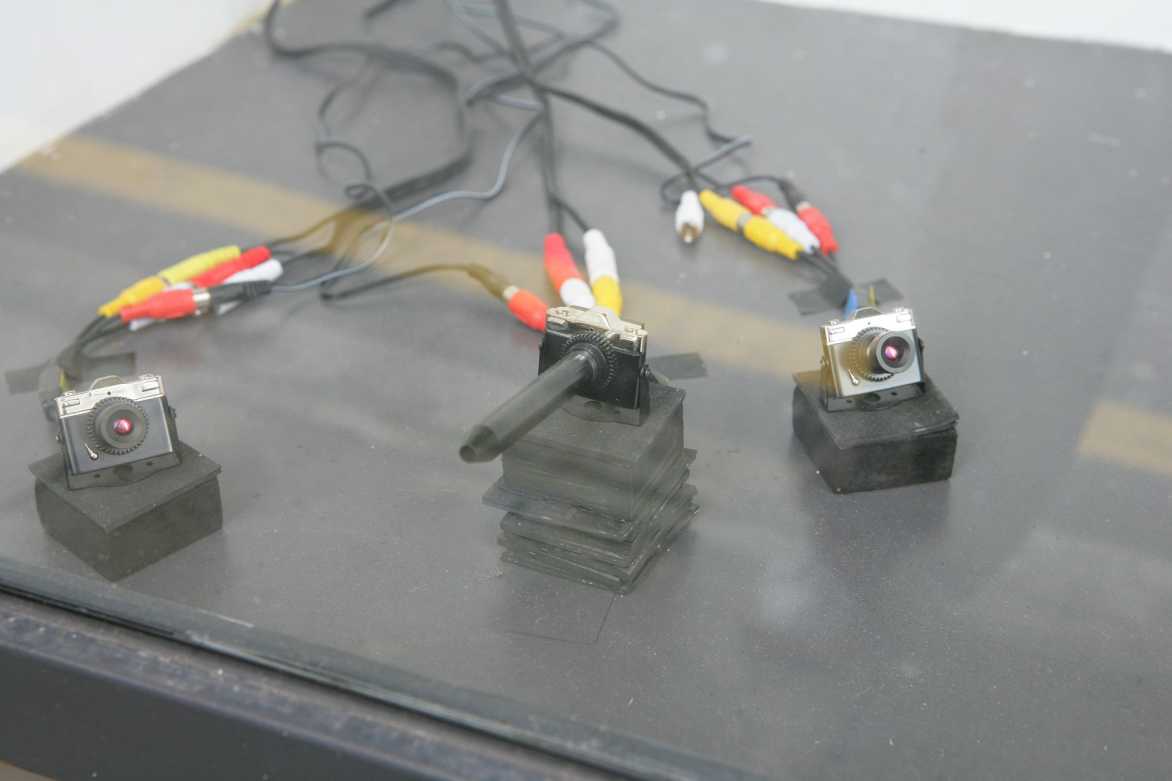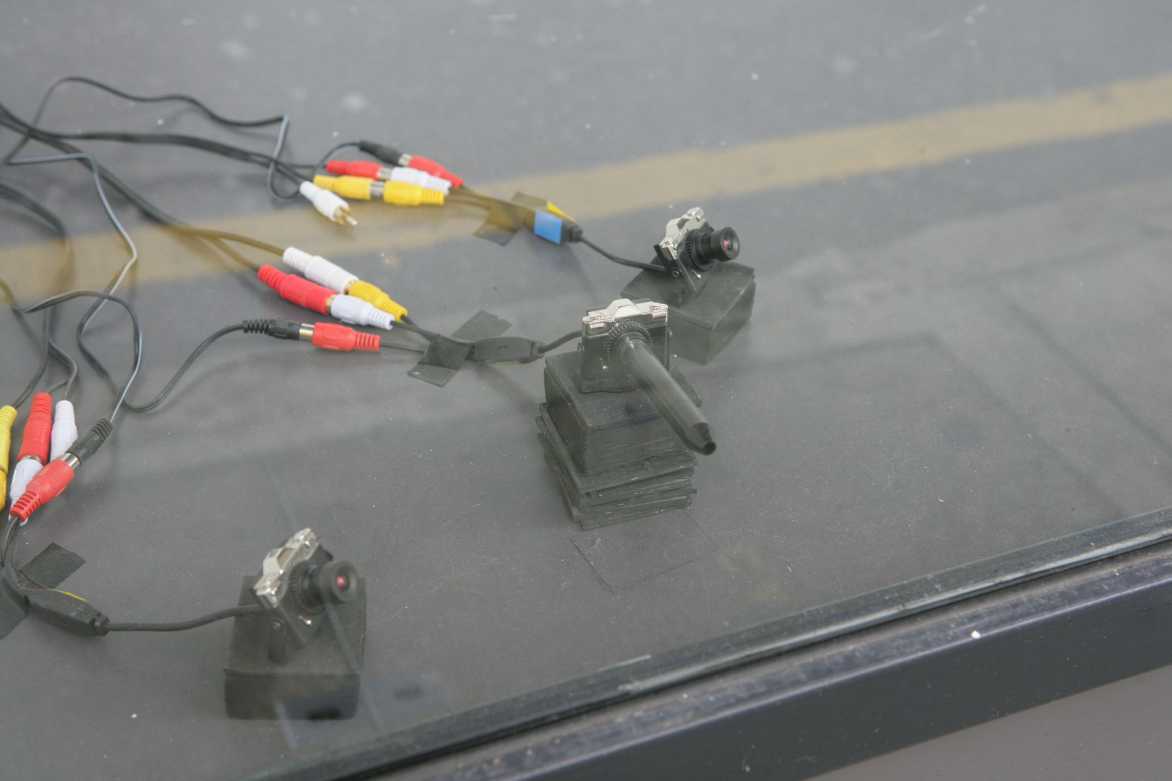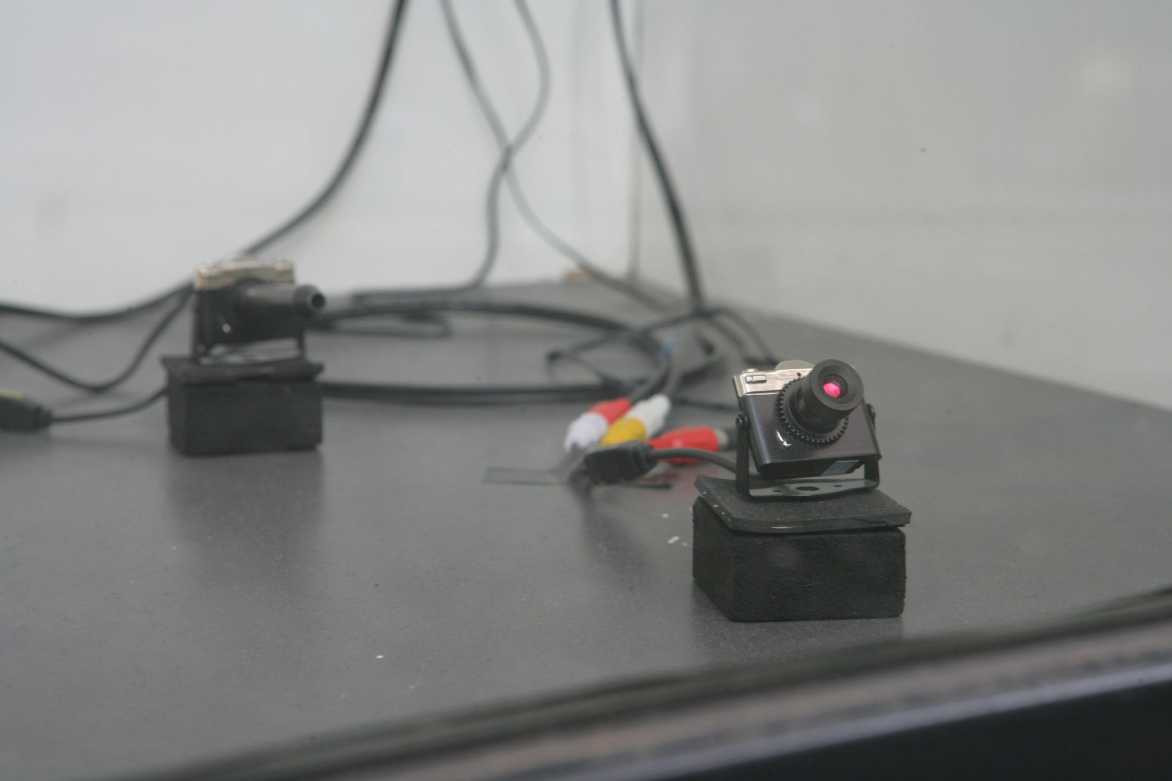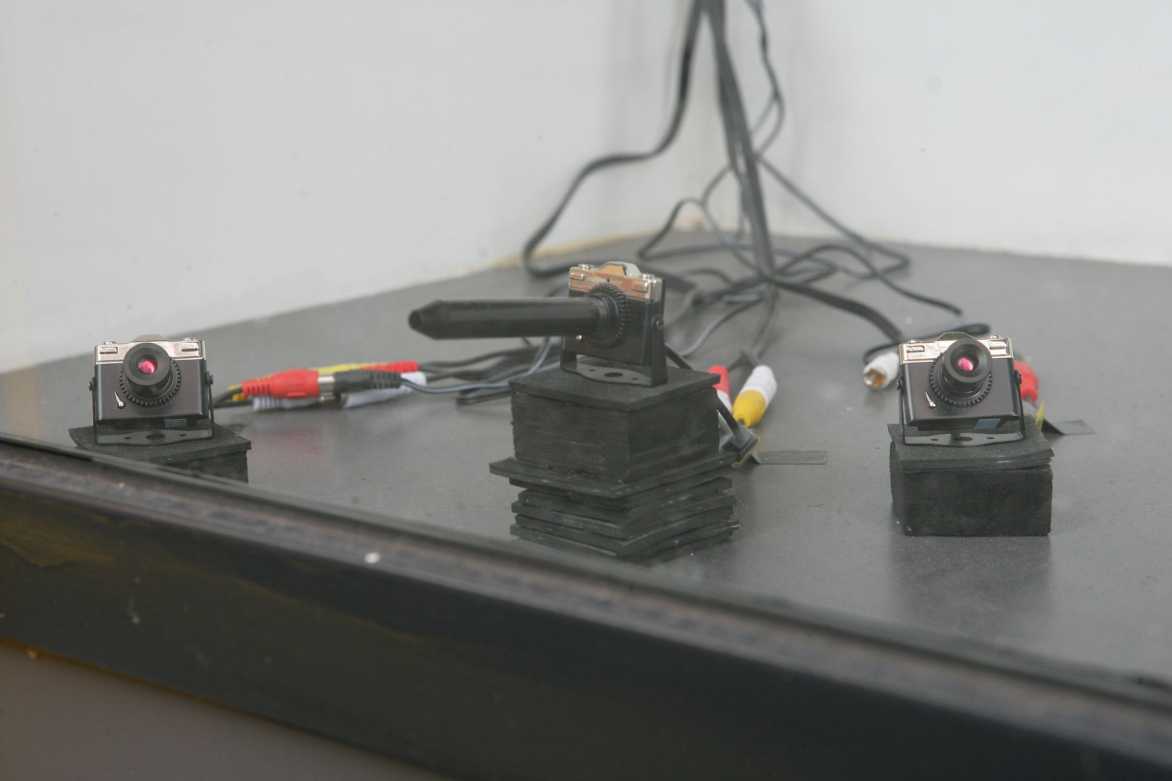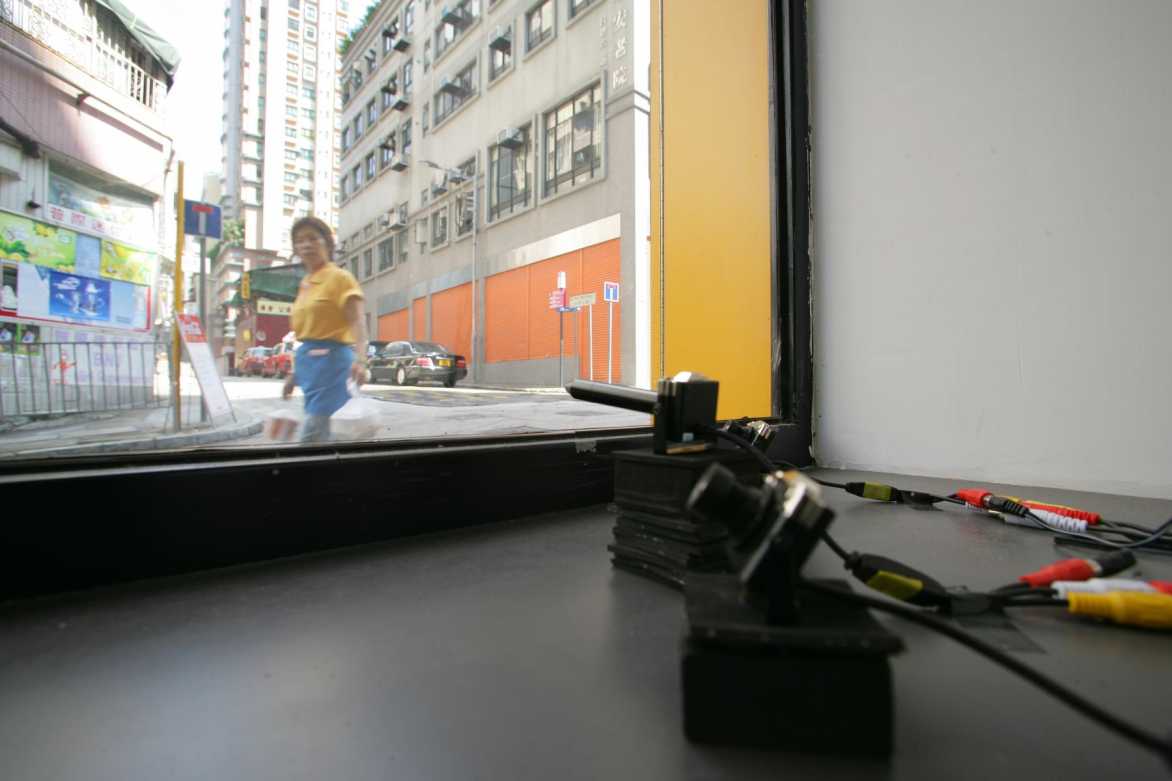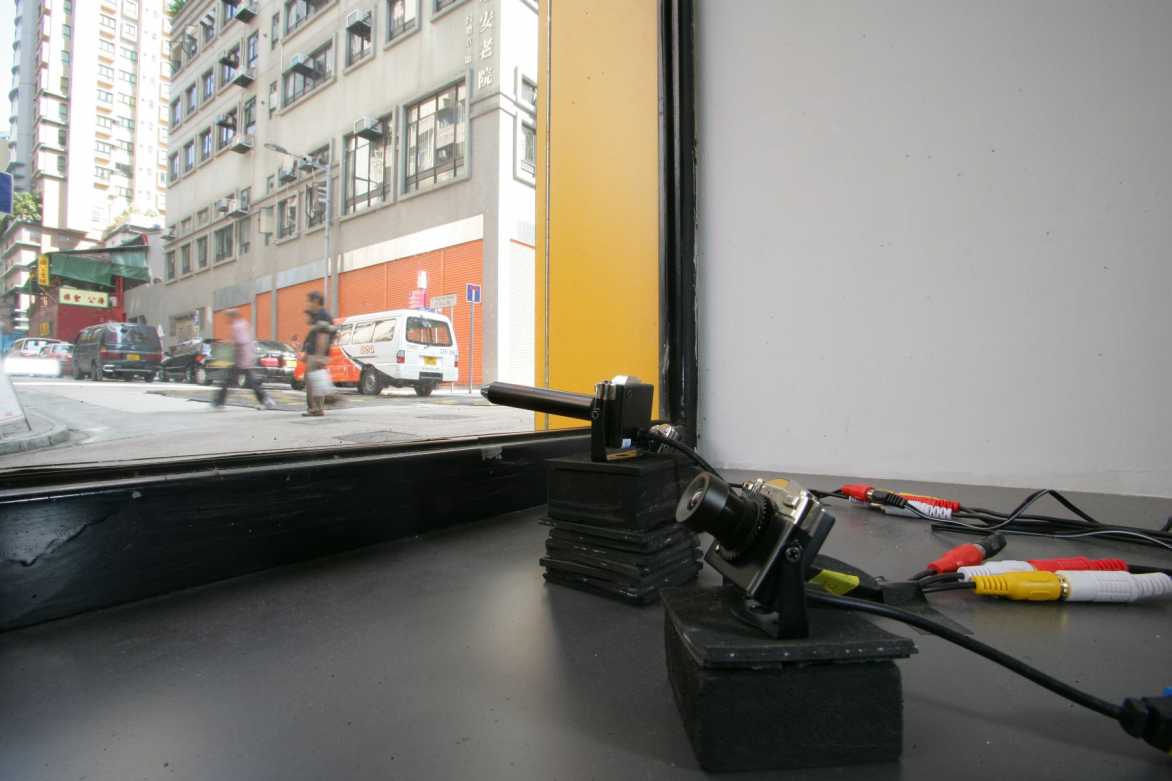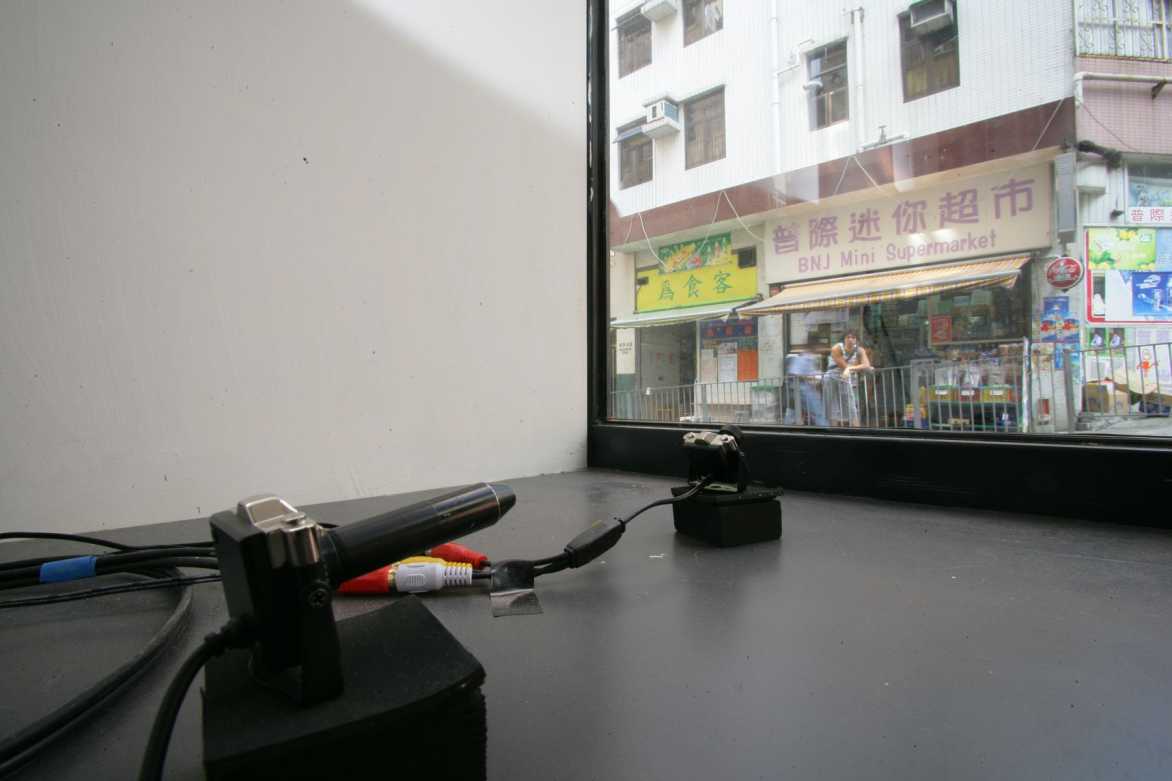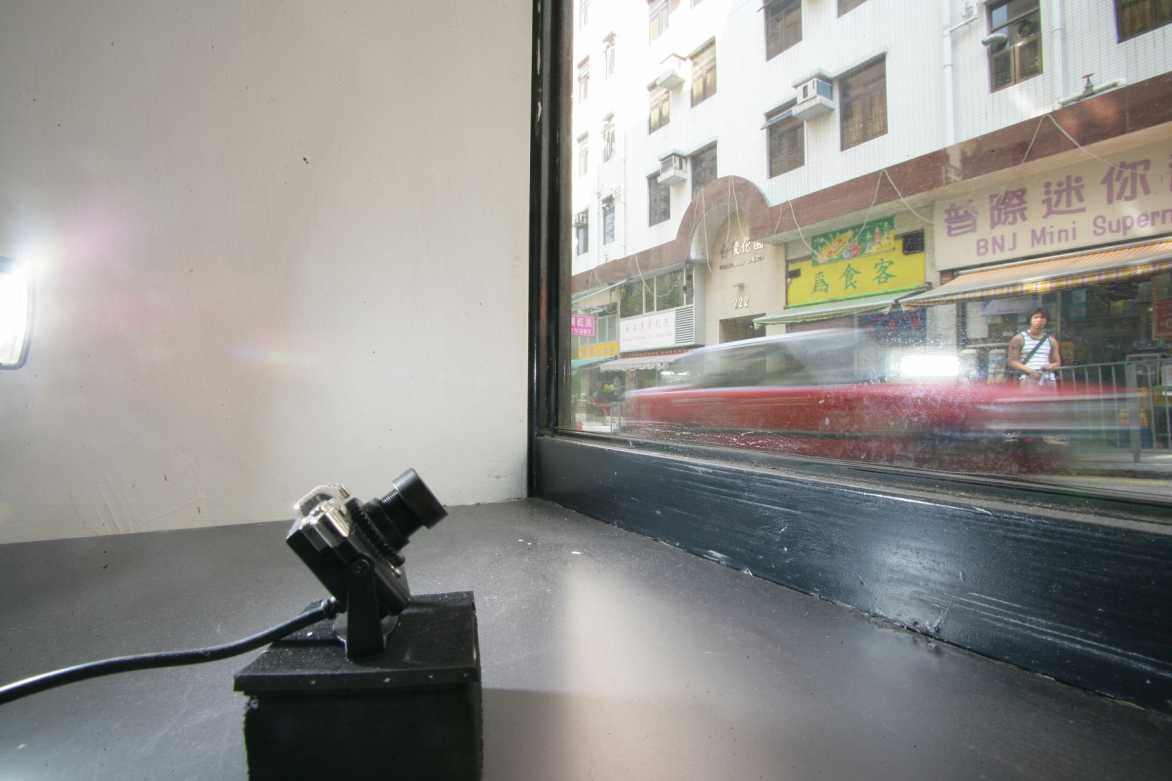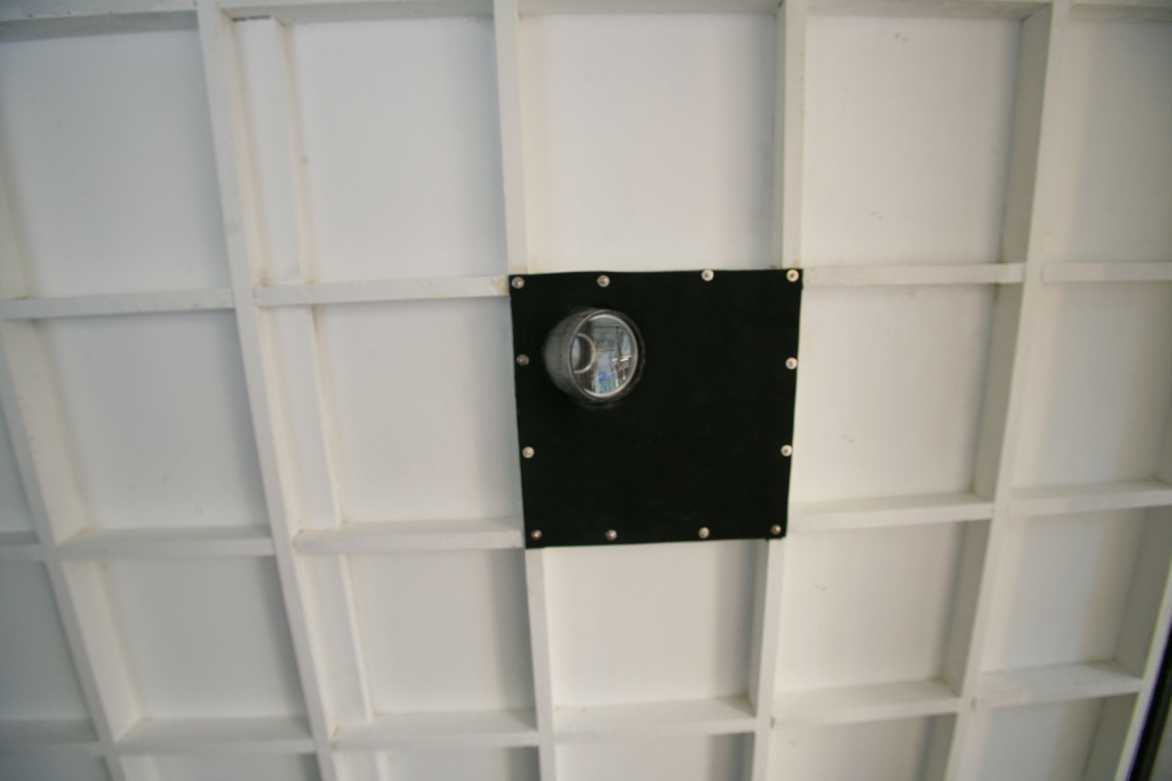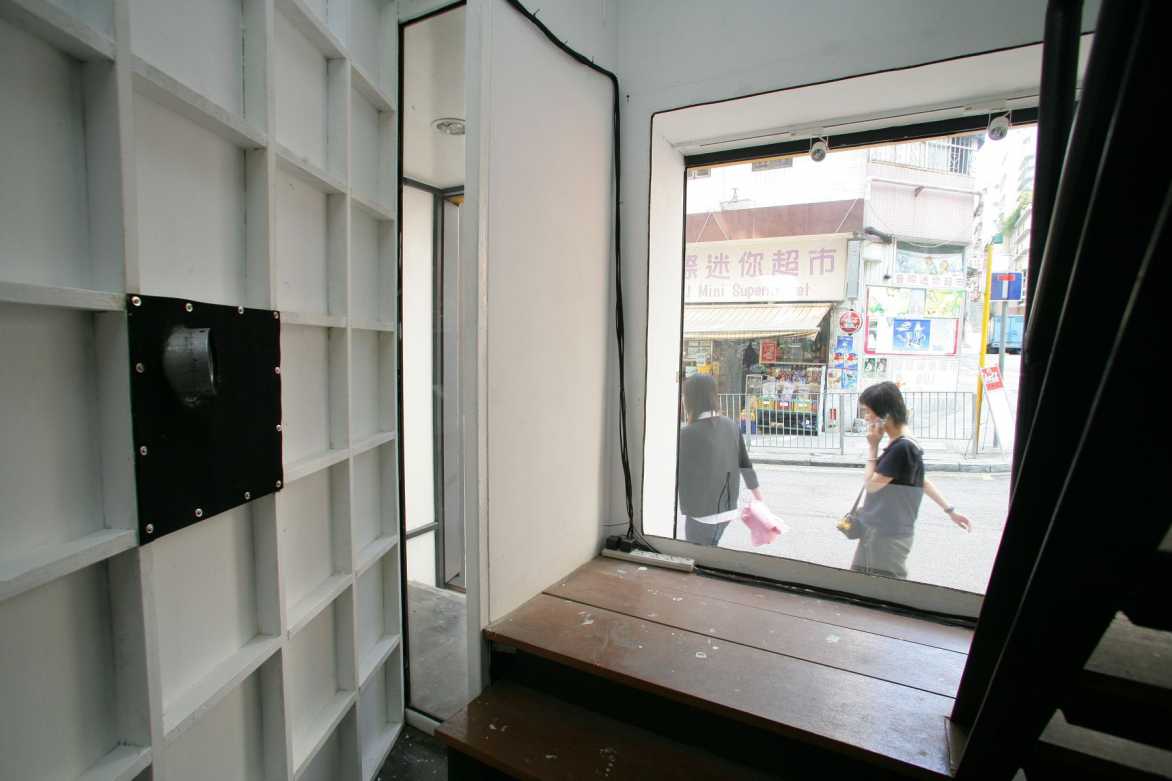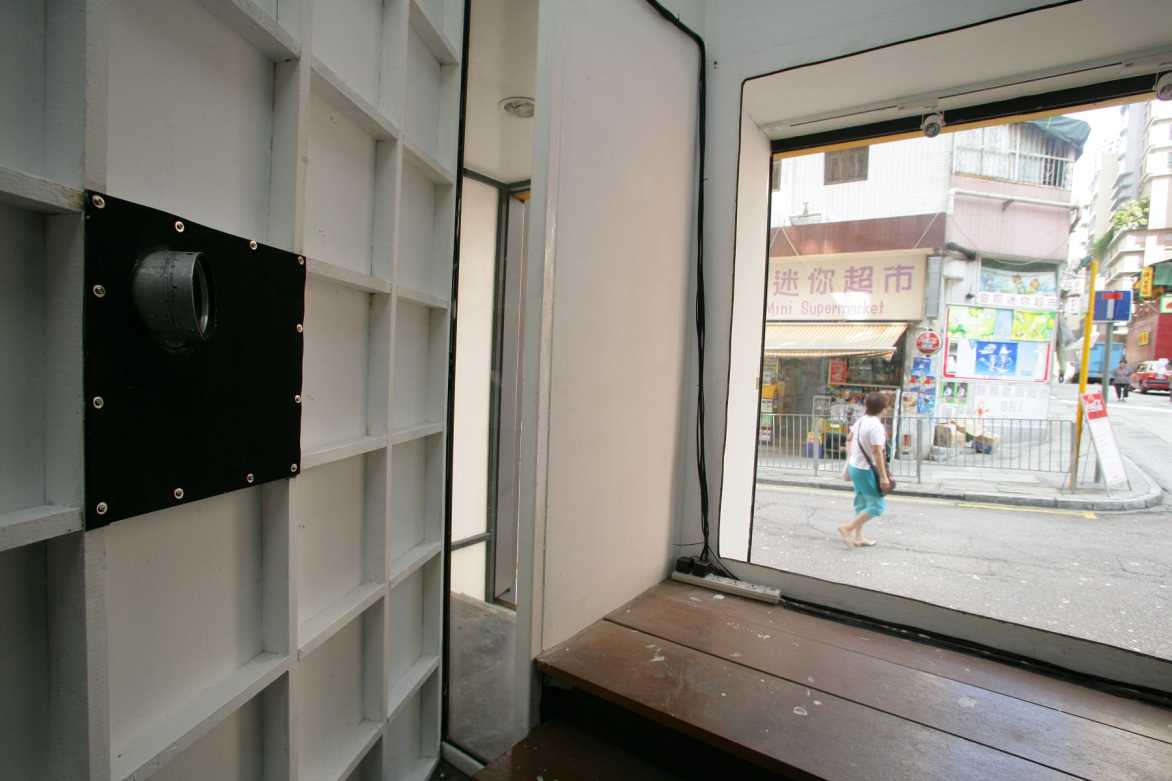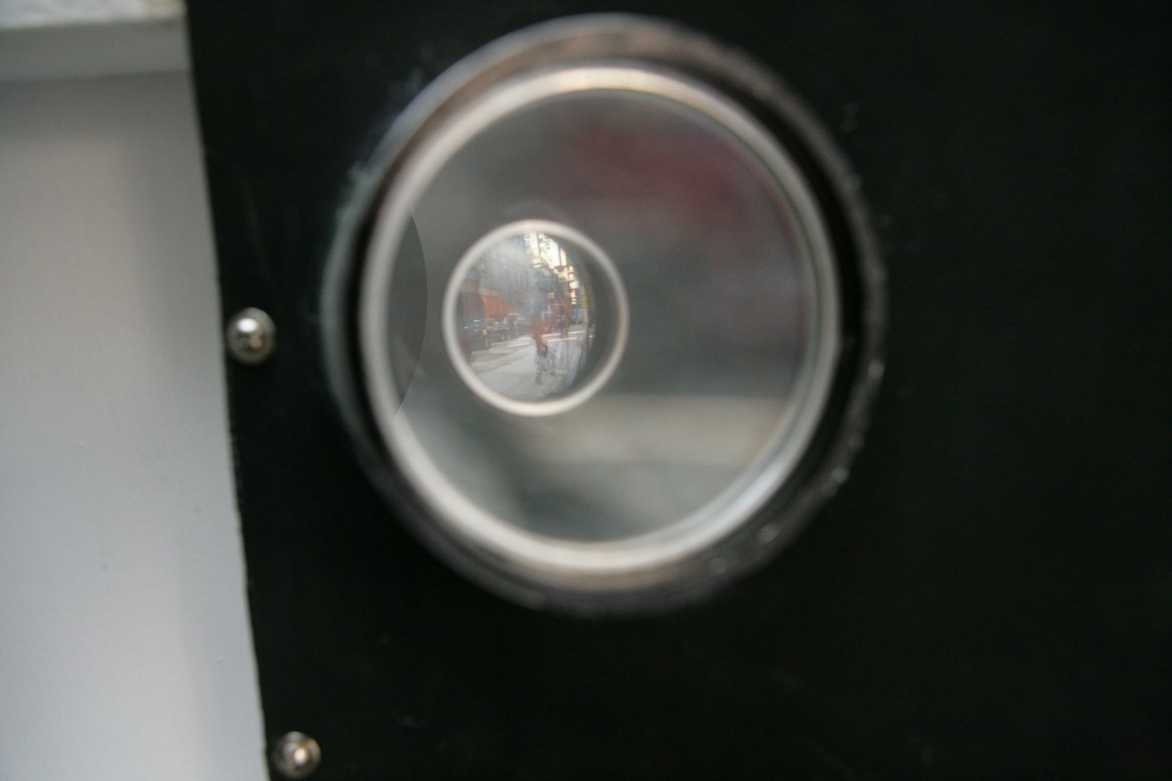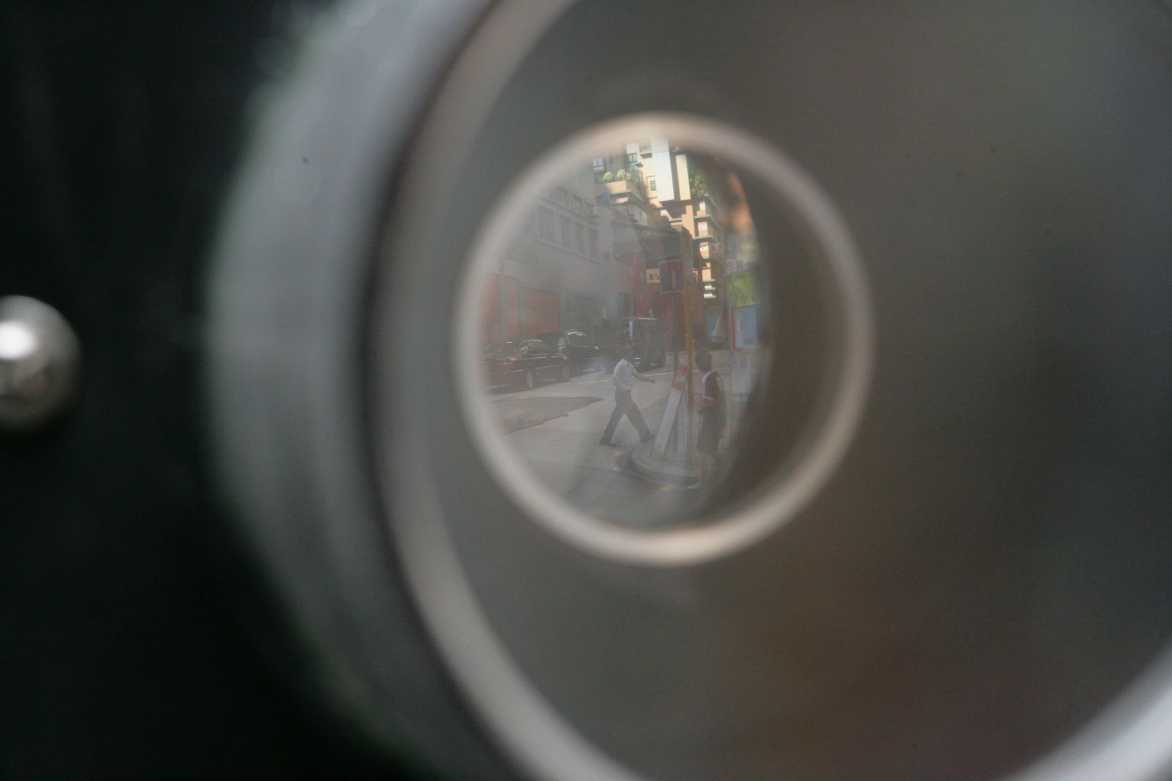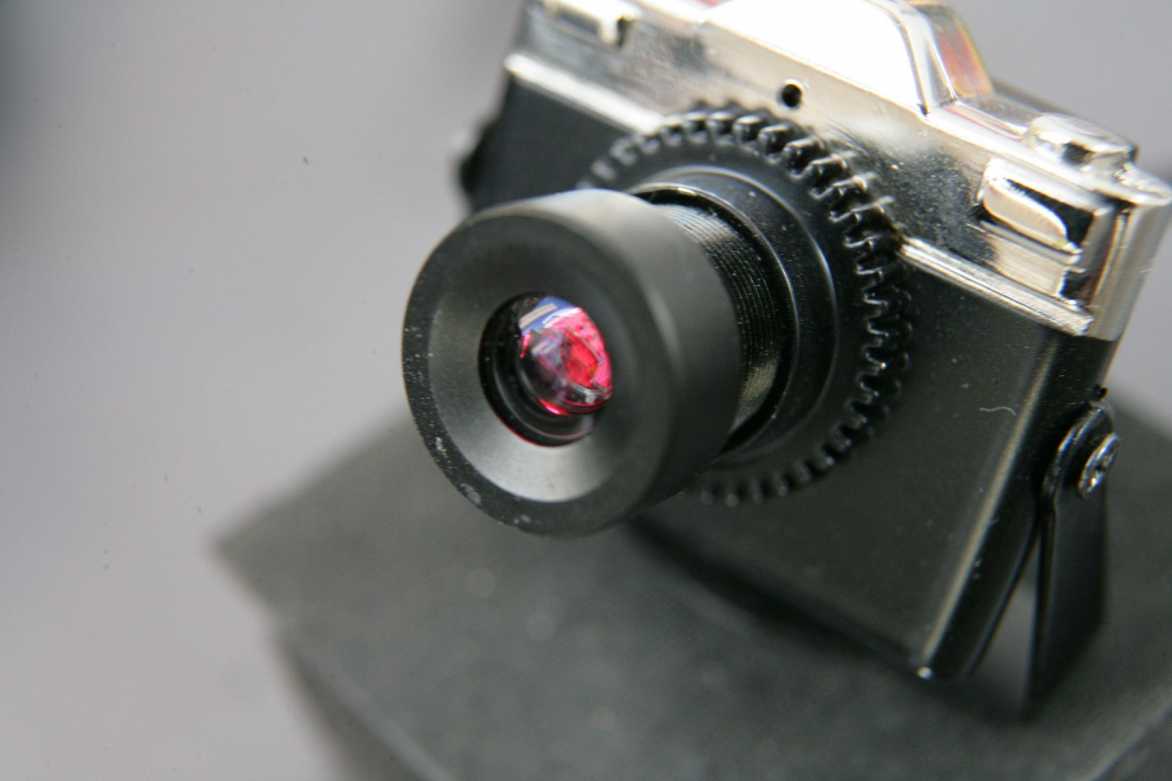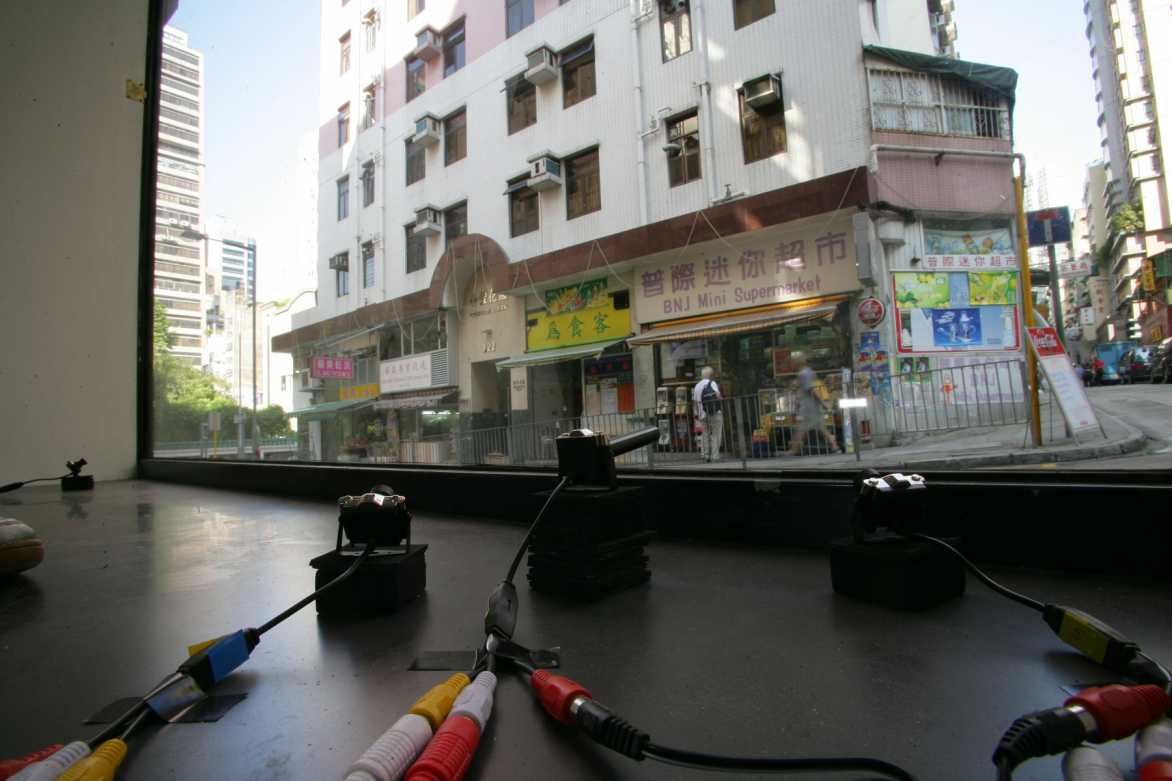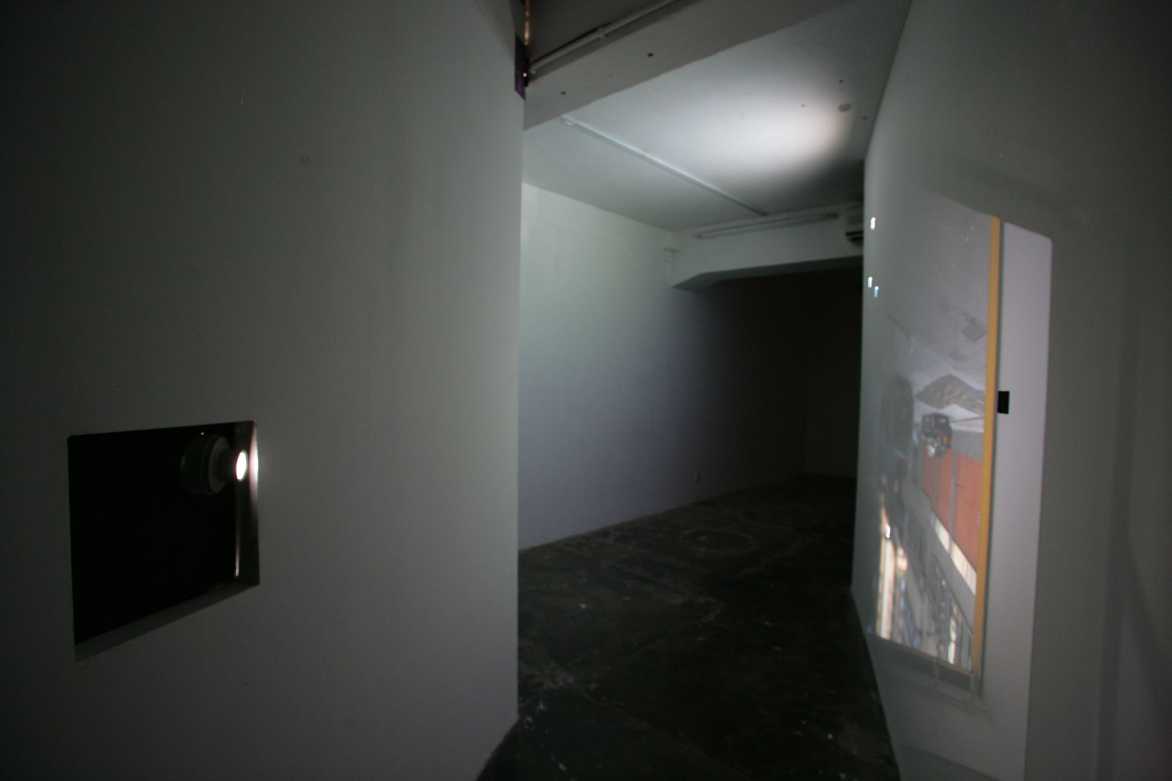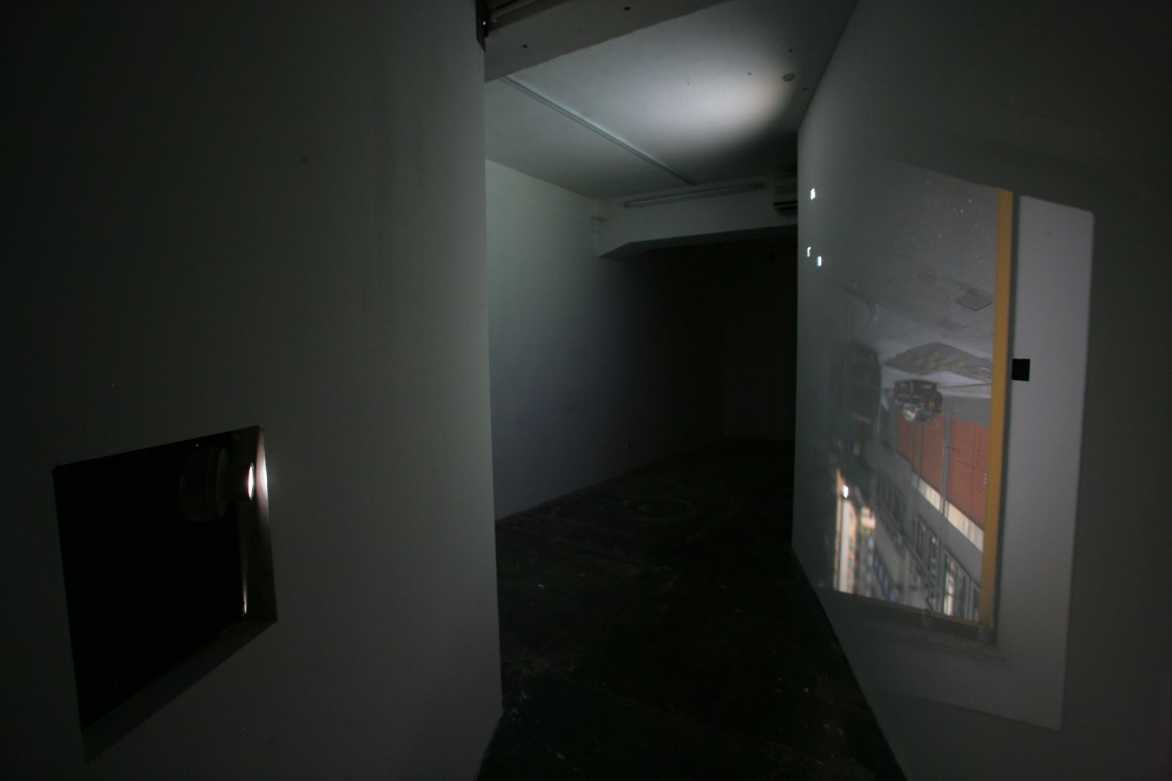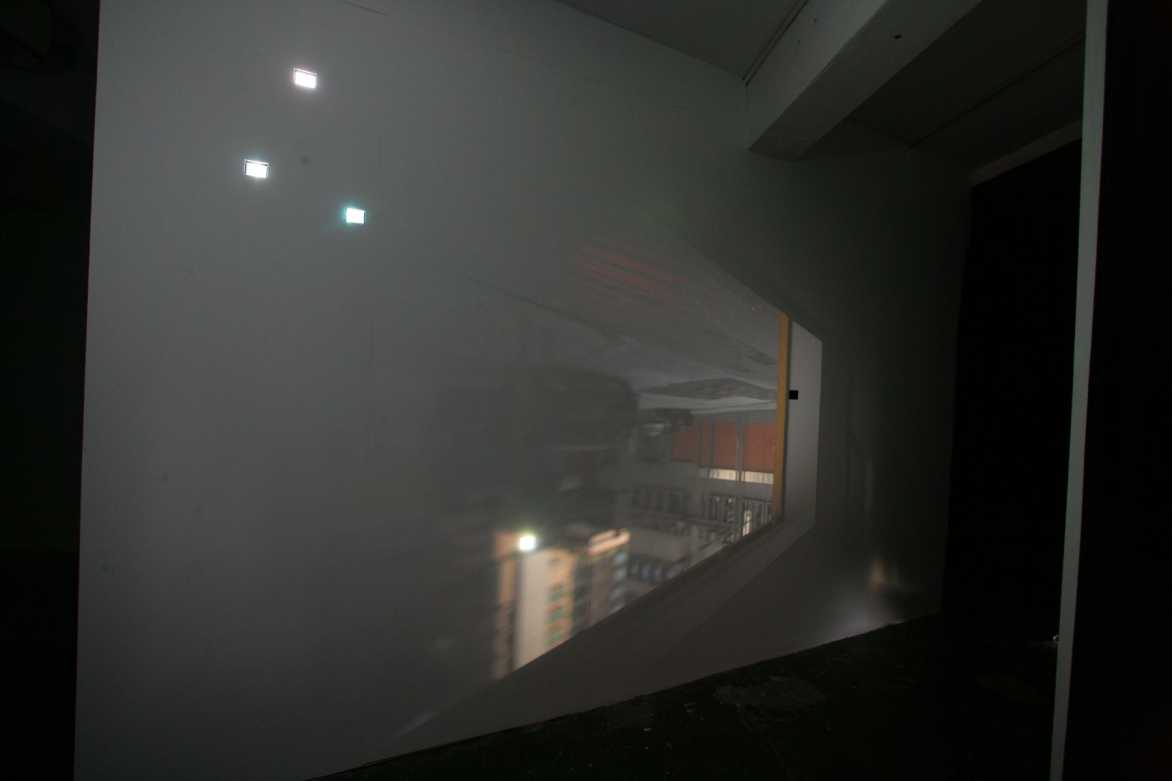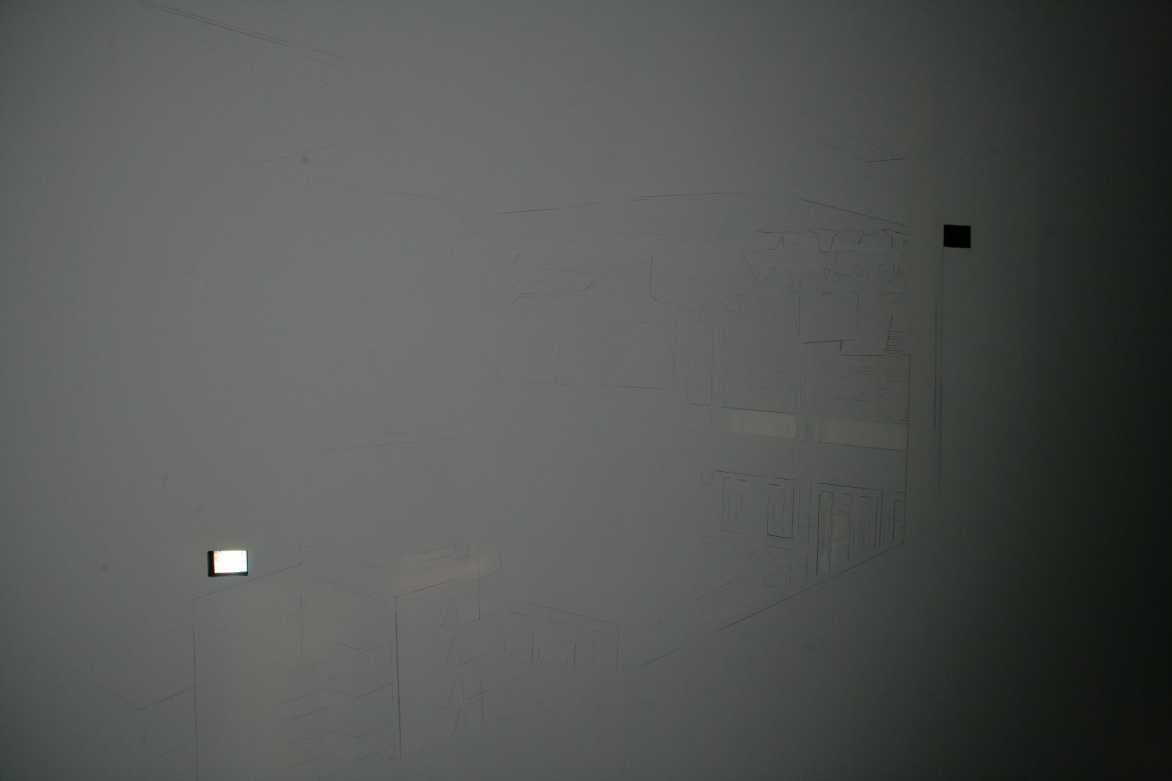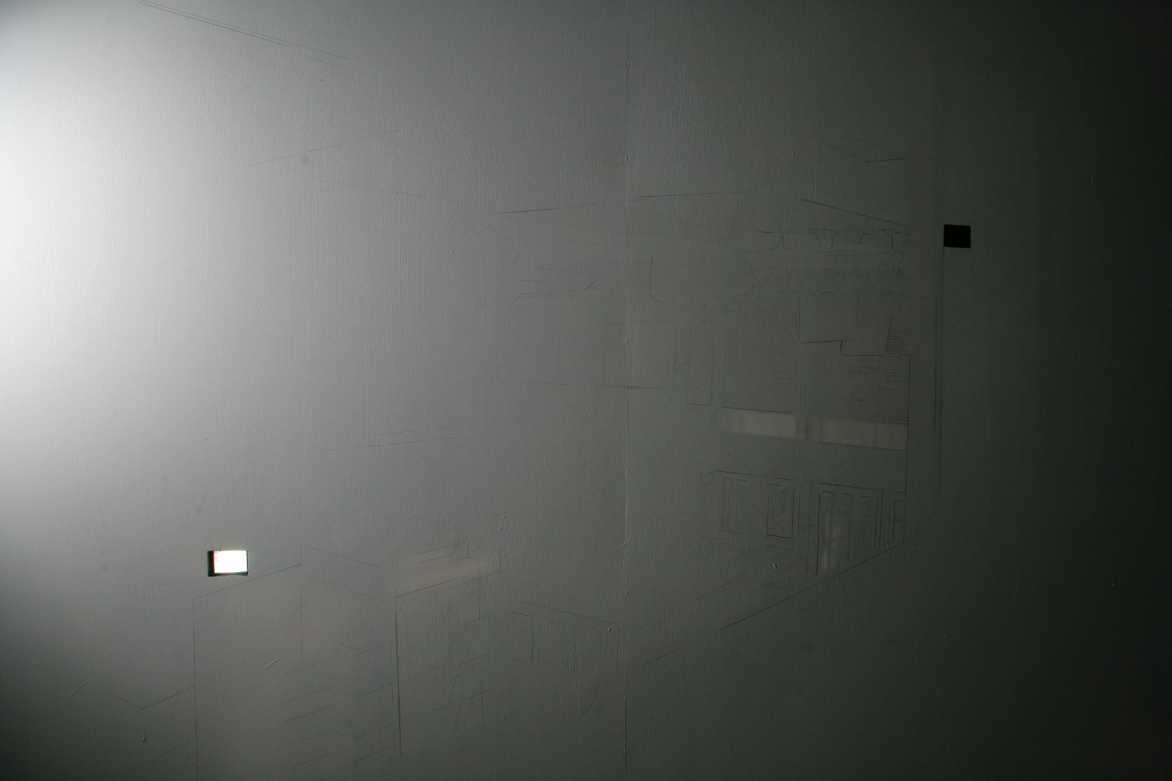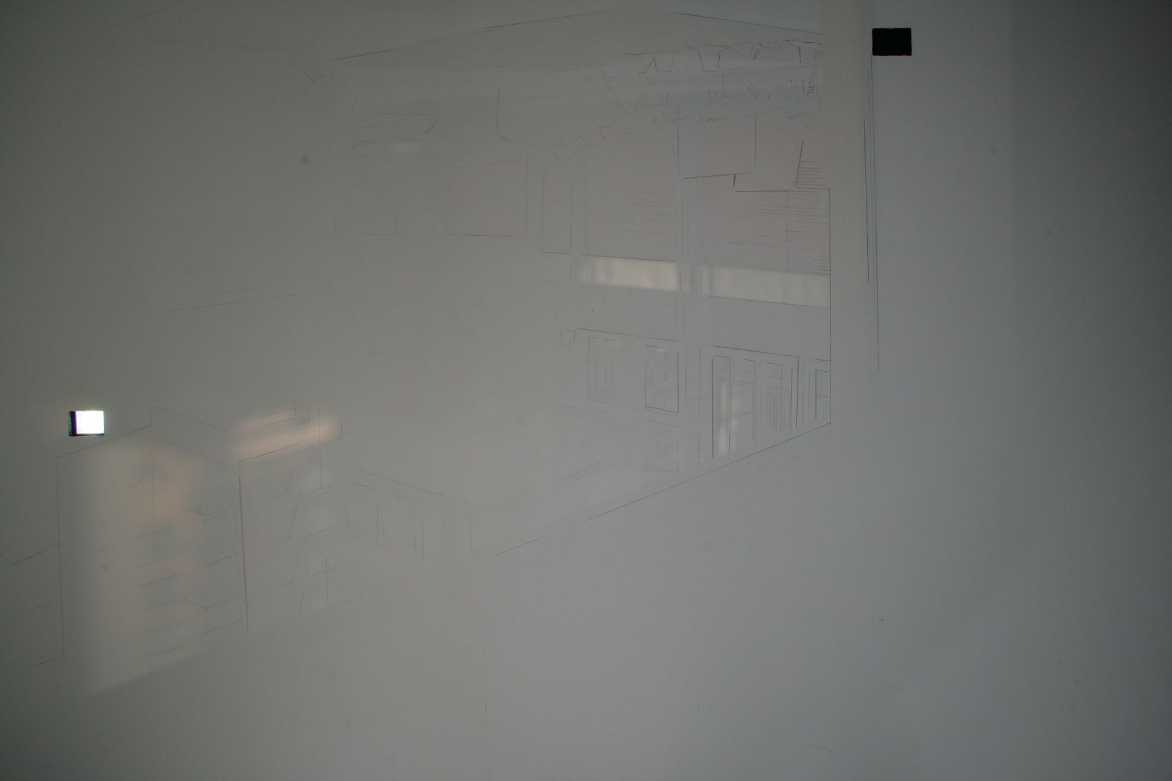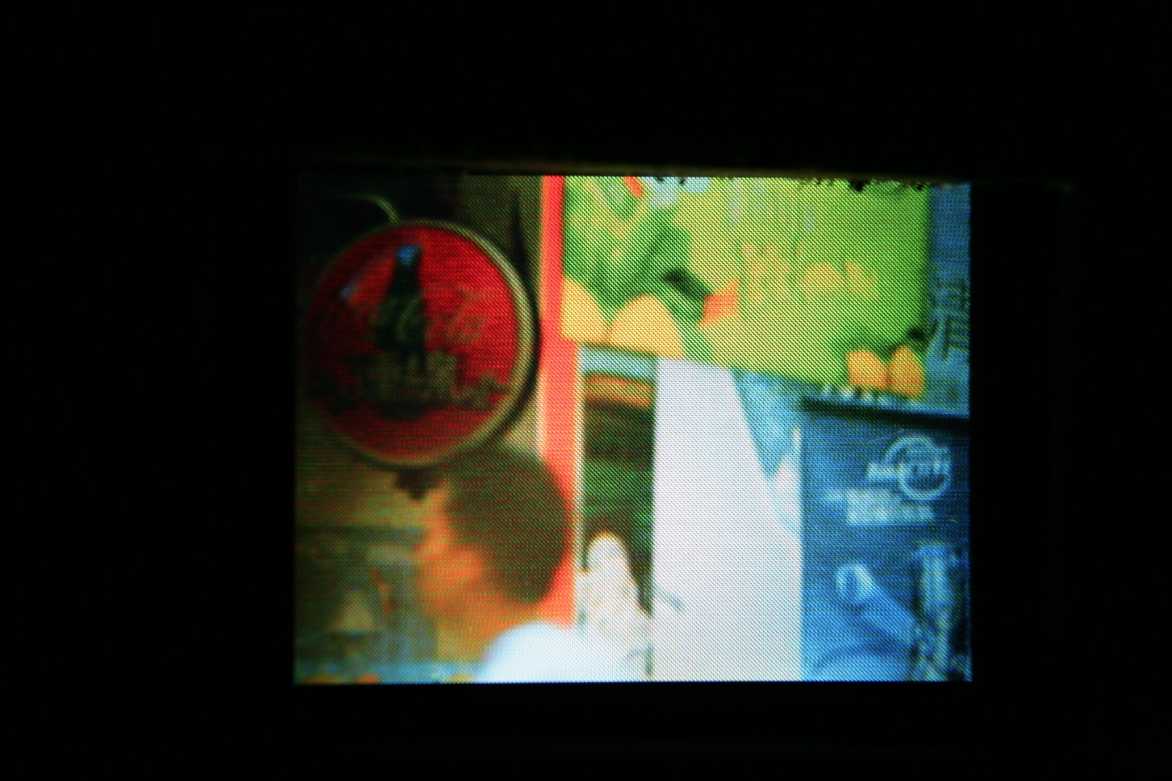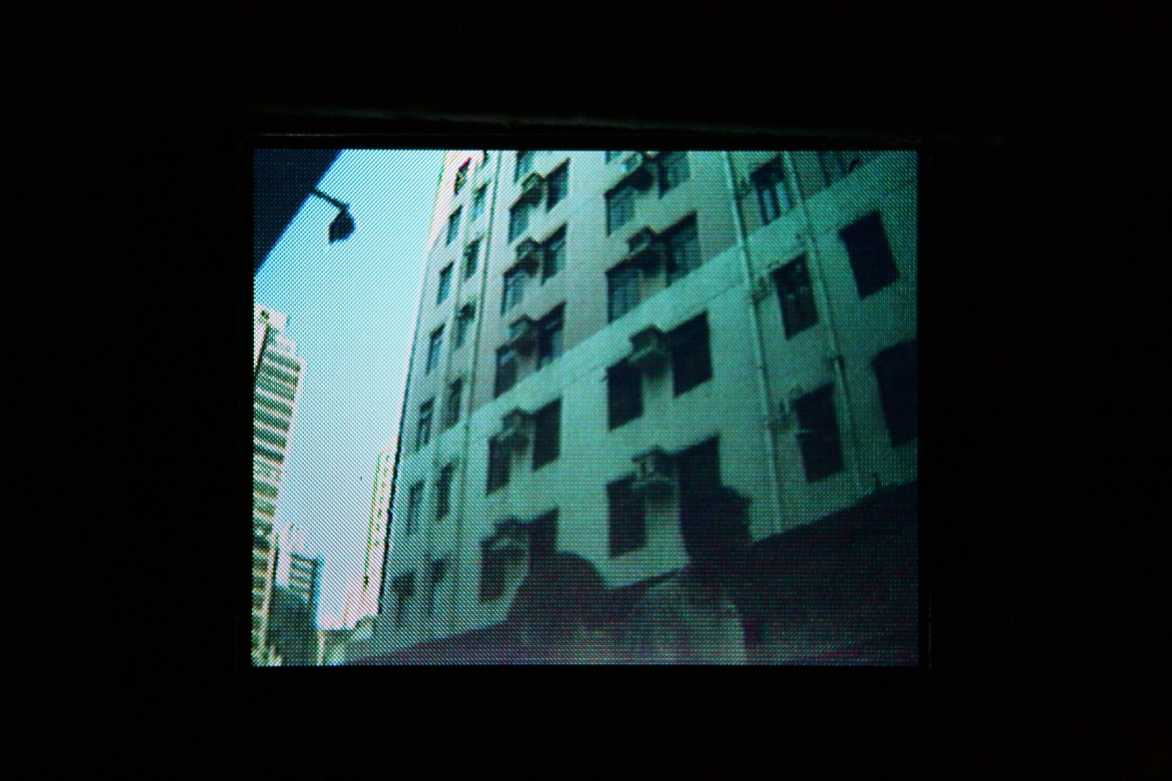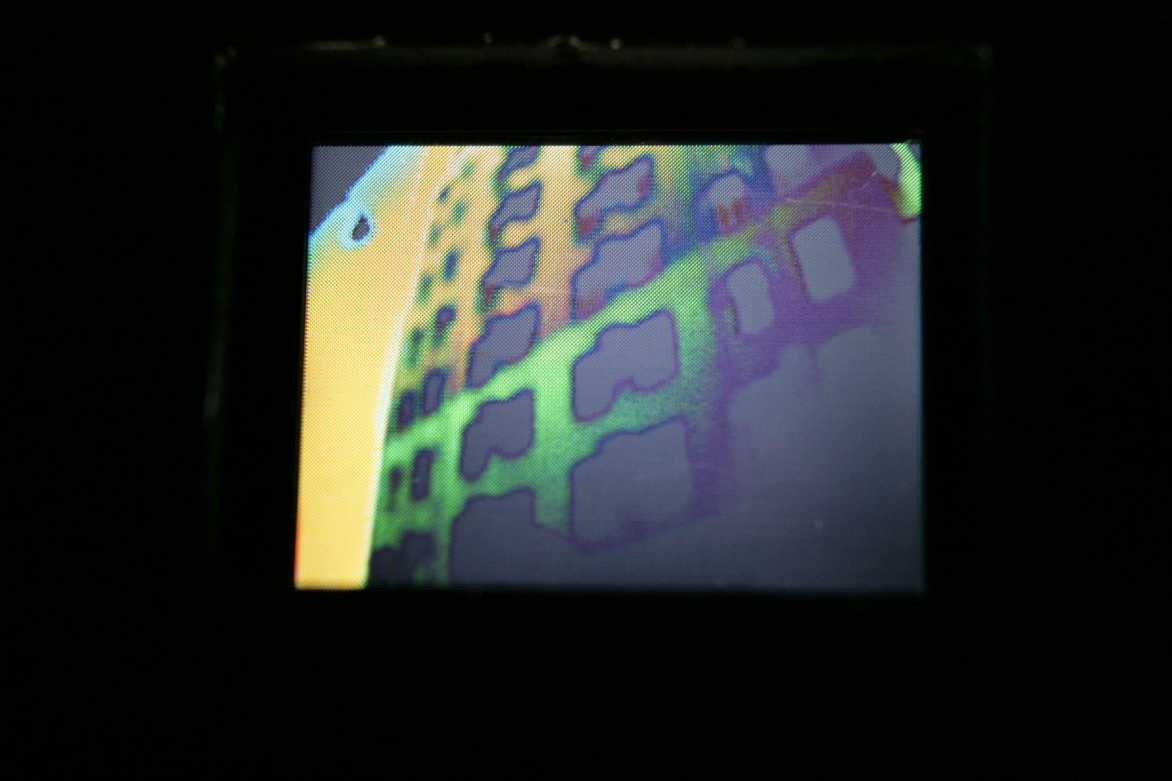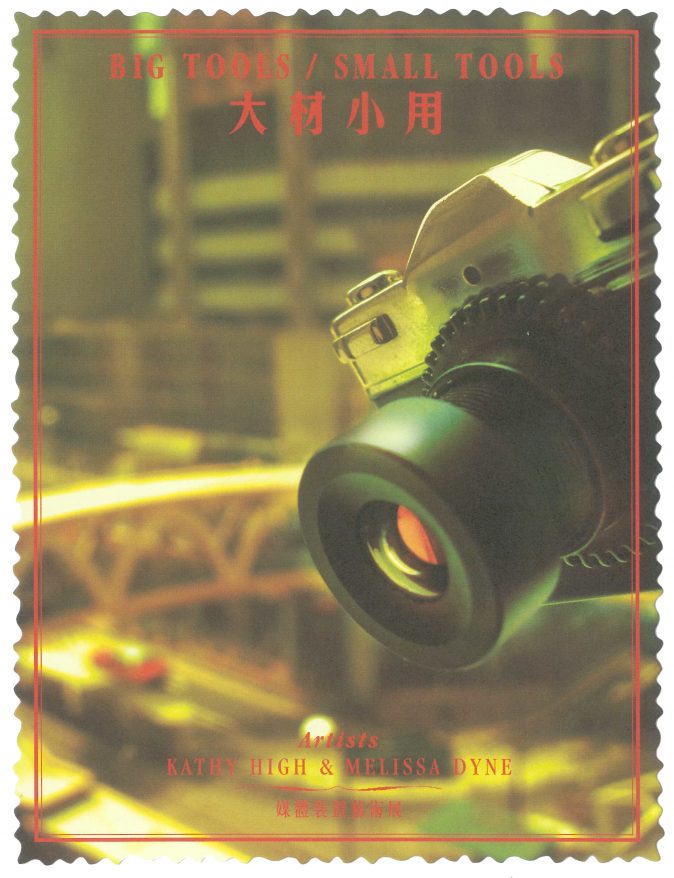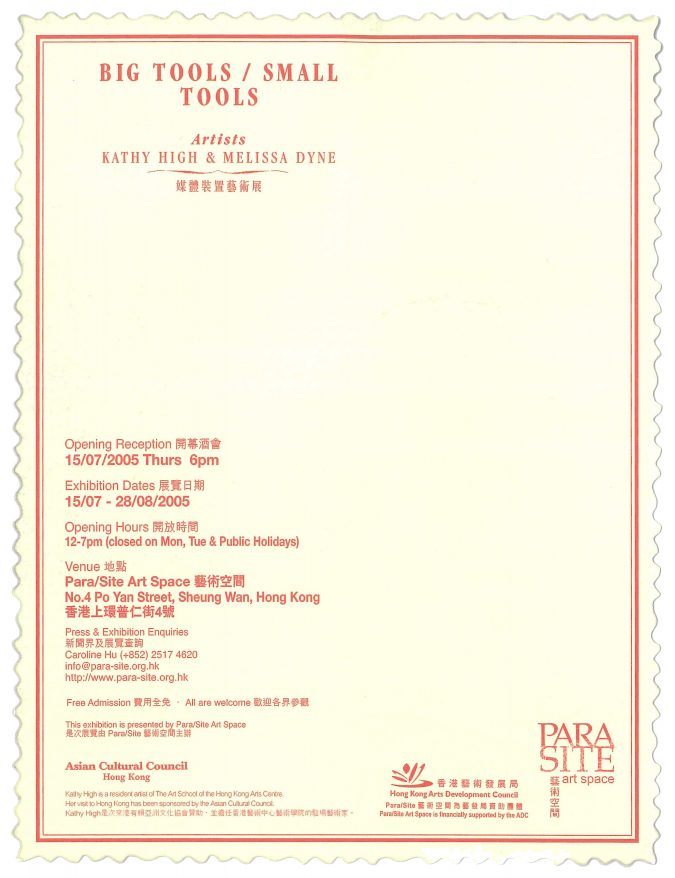Looking at various ways of seeing, the installation combines analog and digital, macro and micro imaging, in one space to contrast modes of observation. Much like a new comer’s virgin scrutiny of an unfamiliar view, the installation reveals something out of normal sight in the surroundings.
“Man does not make structures out of materials; we make large structures out of small structures. A regularity of patterning that must always link man made and nature devised or visible module associations.” (, , )
Using small video monitors with a large scale projected image of the live street scene, this collaborative installation looks at space through the use of a camera obscura lens system combined with multiple images of spy and toy video cameras. The image of the street outside the is projected via a camera obscura onto a gallery wall. Embedded within that projected image are multiple small video monitors displaying details of the same street scene. The camera obscura and the small video displays are live allowing interaction from the street to the space as people discover the various camera sources. The combined pictures also reveal different systems of viewing – one older optical system which is closer to the workings of the eye, and one comfortably similar to the digital barrage we see daily – to expose how we view things as opposed to what they represent.
combines the works of artists, . This collaborative project takes place during an artist-residency for sponsored by the . Both artists are from the U.S. works with revamping old optical devices and developed the hand-crafted lens technology for the camera obscura in this exhibition. High works with digital video and has an interest in low-tech electronic imaging technology, exploring the cultural influences and meaning of these tools.
The camera obscura wall projection appears as a giant landscape within the gallery space (with the camera obscura lens housed inside an interior wall of the gallery near the front window). A number of lcd video monitors, one every few feet, are mounted into the wall, dotting the projected landscape image. The images on the lcd monitors line up with the details of the camera obscura landscape projection at various times of the day, detailing moments of the larger scene, creating an intimate mapping of the exterior space of the street. The camera obscura projection is a live image of what is happening outside projected onto the inside, a constantly moving picture in real time which has no grain, needs no development and has no permanence. The video is the detail, the underbelly, the pixilated image of the big picture. Details of sites hidden to the naked eye, normally invisible, are revealed by the close-up scrutiny of the video cameras, creating a kind of electronic linguistics, an electronic mediation of the same projected landscape from the camera obscura. These various images of the landscape are a collapse the inside-outside observation we encounter regularly through mapping systems, surveillance panels, baby monitors, telephoto lens – bringing together different spaces with enhanced modes of sensing them. is a reflection of our contemporary visual landscape marking the combined information of simultaneous perceptual play and observation.
